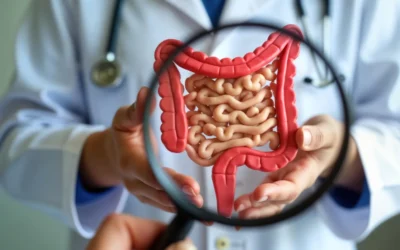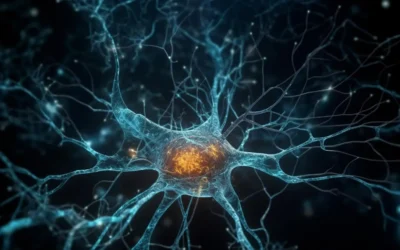Cancer is a global health challenge, claiming millions of lives annually and burdening healthcare systems worldwide. According to the World Health Organization, nearly 20 million new cancer cases are diagnosed each year, with numbers expected to grow due to aging populations and environmental factors. Early detection remains one of the most effective strategies to improve survival rates, yet conventional diagnostic approaches such as tissue biopsies often come with limitations: they can be invasive, risky, and sometimes unable to detect cancer until it has advanced.
Enter liquid biopsy—a cutting-edge, non-invasive technique that analyzes biomarkers in bodily fluids like blood, urine, and saliva to detect cancer. This emerging technology represents a paradigm shift in oncology, offering a sensitive, accurate, and patient-friendly alternative to traditional diagnostics. Liquid biopsies hold the promise of transforming how cancer is diagnosed, monitored, and treated, making early detection more feasible and accessible.
This article explores the science behind liquid biopsies, compares them to conventional methods, discusses their current clinical applications, addresses challenges and future innovations, and outlines their immense potential in reshaping personalized cancer care.
In This Article
Understanding the Science Behind Liquid Biopsies
At the heart of a liquid biopsy is the analysis of cancer-derived components circulating in bodily fluids. These include circulating tumor DNA (ctDNA), circulating tumor cells (CTCs), exosomes, tumor-educated platelets (TEPs), and other molecular fragments shed by tumors. Unlike traditional tissue biopsies, which require surgical extraction of a tumor sample, liquid biopsies only require a simple fluid sample, often a blood draw.
The technology hinges on advanced molecular techniques such as digital PCR (polymerase chain reaction), next-generation sequencing (NGS), and more recently, CRISPR-based detection systems. These tools are used to detect specific mutations, methylation patterns, and other alterations in ctDNA that are indicative of malignancy. For instance, a common application is identifying KRAS or EGFR mutations in non-small cell lung cancer (NSCLC) patients, guiding treatment options without needing invasive tissue samples.
While ctDNA is the most widely studied and clinically applied biomarker, ongoing research is expanding into multi-analyte approaches that combine several markers to increase diagnostic accuracy. Liquid biopsies not only provide a snapshot of the genetic landscape of a tumor but also allow real-time tracking of changes during treatment, capturing tumor heterogeneity and clonal evolution more effectively than traditional biopsies.
Comparing Liquid Biopsies and Traditional Tissue Biopsies
The differences between liquid and tissue biopsies are stark, particularly in terms of invasiveness, repeatability, and comprehensiveness. Traditional biopsies involve the surgical removal of a tissue sample from the suspected tumor site, which can pose significant risks—especially if the tumor is located in a hard-to-reach area such as the brain or lungs. These procedures can be painful, carry risk of infection, and are not ideal for routine monitoring.
In contrast, liquid biopsies are performed via a simple blood draw or other fluid collection, making them vastly more convenient and safer. This feature makes them especially valuable for patients requiring frequent monitoring or those too ill for invasive procedures. Moreover, while tissue biopsies capture a static image of a single tumor location, liquid biopsies can reflect the dynamic and heterogeneous nature of cancer throughout the body by sampling tumor material released into circulation.
Comparison Table: Liquid Biopsies vs. Traditional Tissue Biopsies
| Feature | Liquid Biopsy | Traditional Tissue Biopsy |
|---|---|---|
| Invasiveness | Minimally invasive (blood or fluid sample) | Invasive surgical or needle procedure |
| Safety | Low risk of complications | Moderate to high risk, depending on tumor location |
| Frequency of Testing | Suitable for repeated use | Not ideal for frequent testing |
| Tumor Heterogeneity | Detects multiple tumor sites | Localized to sampled region |
| Turnaround Time | Often faster | May take days to weeks |
| Cost | Generally lower in long-term monitoring | Higher initial and repeat costs |
These distinctions underscore the transformative potential of liquid biopsies in clinical oncology, particularly in the era of precision medicine.
Clinical Applications: Screening, Diagnosis, and Monitoring
Liquid biopsies are being increasingly integrated into various phases of cancer care, from initial screening to long-term monitoring. One of their most promising uses lies in early cancer detection—identifying disease before symptoms arise and before tumors grow large enough to be detectable through imaging. Early detection significantly improves treatment outcomes, especially in aggressive cancers like pancreatic or lung cancer, where symptoms often appear late.
For diagnosis, liquid biopsies are already being used to detect actionable mutations in several cancers. For instance, the FDA has approved liquid biopsy tests to identify EGFR mutations in NSCLC patients, helping determine eligibility for targeted therapies. Multi-cancer early detection (MCED) tests are also under development, which aim to detect dozens of cancer types from a single blood sample.
In disease monitoring, liquid biopsies allow clinicians to track treatment response by observing changes in ctDNA levels over time. A drop in ctDNA may indicate treatment success, while an increase could signal resistance or recurrence. This real-time feedback enables dynamic treatment adjustments, improving efficacy and minimizing unnecessary toxicity.
Furthermore, liquid biopsies are being explored for minimal residual disease (MRD) detection—identifying trace amounts of cancer left behind after surgery or chemotherapy. Detecting MRD early can lead to prompt intervention, reducing the risk of relapse.
Emerging Technologies Enhancing Liquid Biopsy Accuracy
As with any diagnostic tool, sensitivity and specificity are crucial for clinical reliability. To enhance the accuracy of liquid biopsies, scientists are combining multiple analytes, integrating artificial intelligence (AI), and developing novel devices for biomarker enrichment.
Recent innovations in microfluidic platforms allow researchers to isolate rare tumor cells or DNA fragments from blood with unprecedented precision. Microfluidics involves manipulating small volumes of fluids in channels narrower than a human hair, increasing capture efficiency of biomarkers like exosomes and CTCs. These devices reduce background noise from normal DNA and improve signal detection.
Artificial intelligence and machine learning algorithms are being used to analyze the complex datasets generated by liquid biopsies. These tools can identify subtle patterns in mutation profiles, methylation signatures, or RNA expression that may elude traditional statistical models.
In addition, the combination of liquid biopsy with other omics technologies—such as proteomics, metabolomics, and epigenomics—offers a holistic view of cancer biology. For example, integrating DNA methylation analysis with ctDNA sequencing can improve the differentiation between benign and malignant signals, particularly in early-stage cancers.
Table: Technologies Enhancing Liquid Biopsy Performance
| Technology | Function | Impact on Detection |
|---|---|---|
| Next-Generation Sequencing | High-throughput DNA analysis | Identifies mutations with high precision |
| Digital PCR | Quantifies specific DNA fragments | Increases sensitivity for known targets |
| Microfluidics | Isolates CTCs and exosomes | Enhances biomarker enrichment |
| AI and Machine Learning | Interprets complex biomarker data | Improves diagnostic accuracy |
| Epigenomic Profiling | Analyzes DNA methylation patterns | Enables early-stage cancer detection |
These innovations are accelerating the adoption of liquid biopsies in both research and clinical settings, broadening their applications and improving their performance.
Challenges and Barriers to Widespread Clinical Use
Despite their promise, several challenges hinder the full clinical implementation of liquid biopsies. One of the primary concerns is sensitivity, particularly in early-stage cancers where ctDNA levels may be extremely low. This makes it difficult to differentiate between cancerous and benign signals, potentially leading to false negatives or positives.
Another challenge is standardization. With numerous technologies, biomarkers, and platforms in use, results can vary between laboratories and studies. Regulatory bodies are working to establish standardized protocols for sample collection, processing, and analysis to ensure consistency and reliability.
Cost is another barrier, especially in low-resource settings. While liquid biopsies may reduce costs over time by avoiding invasive procedures and enabling early treatment, the initial expense of developing and validating new assays can be high. Moreover, integrating these tests into routine care requires reimbursement frameworks that currently vary by region and insurer.
There are also concerns about overdiagnosis—detecting indolent tumors that may never become clinically significant. This can lead to unnecessary treatments and psychological distress. Therefore, ensuring that liquid biopsy results are interpreted within the context of each patient’s clinical picture is essential.
Despite these challenges, ongoing research, investment, and regulatory guidance are steadily addressing these issues, moving liquid biopsies closer to routine clinical use.
Market Trends: Growth, Investment, and Commercial Potential
The global market for liquid biopsy technology is experiencing robust growth, fueled by technological innovation and a rising demand for non-invasive diagnostic tools. According to a 2025 market analysis by GlobeNewswire, the liquid biopsy market is expected to reach USD 13.44 billion by 2030, growing at a compound annual growth rate (CAGR) of 12.19%.
Several factors are driving this growth: increasing cancer incidence, rising adoption of precision medicine, and growing awareness among clinicians and patients. Investment in liquid biopsy startups and research has surged, with major players like Guardant Health, Foundation Medicine, and Exact Sciences leading the charge.
Market analysts also anticipate a shift toward multi-cancer detection tests and integration with electronic health records, enabling broader population-level screening programs. As clinical validation improves, insurers and public health agencies are more likely to support reimbursement, further boosting adoption.
Practical Insights for Patients and Healthcare Providers
For patients and caregivers, understanding the role of liquid biopsies can be empowering. These tests offer hope not just for diagnosis, but for more personalized, adaptable treatment strategies. If you are undergoing cancer screening or treatment, discussing the possibility of liquid biopsy with your healthcare provider may uncover options that are less invasive and more informative.
Healthcare professionals, on the other hand, should stay updated on the rapidly evolving landscape of liquid biopsy research. Familiarity with FDA-approved tests and those in clinical trials can help integrate these tools into diagnostic pathways. Moreover, recognizing which patients may benefit most—such as those ineligible for tissue biopsy, those under active surveillance, or those with high recurrence risk—can optimize care delivery.
Supporting ongoing clinical trials and data collection initiatives is another way providers can contribute to expanding the clinical utility of liquid biopsies, ultimately improving outcomes for future patients.
Conclusion: The Dawn of a New Era in Cancer Diagnosis
Liquid biopsies are redefining how we approach cancer detection, offering a revolutionary alternative to traditional, invasive diagnostics. By analyzing ctDNA and other tumor-derived biomarkers from simple fluid samples, this technology allows for earlier, safer, and more personalized diagnosis and monitoring. Though still evolving, liquid biopsy is already making a measurable impact in oncology, with applications in mutation detection, treatment selection, and disease surveillance.
The challenges—sensitivity, cost, and standardization—are significant but surmountable. Continued research, technological refinement, and collaborative efforts across clinical, regulatory, and commercial sectors are essential for unlocking the full potential of this innovation.
As we stand at the threshold of a new frontier in cancer care, liquid biopsy exemplifies the shift toward minimally invasive, precision-driven medicine. Its integration into standard practice could transform cancer detection and management, leading to better outcomes and more hopeful futures for millions around the world.
References
- GlobalRPH. (2025, March 21). Liquid Biopsies – The Future of Early Cancer Detection. Retrieved from https://globalrph.com/2025/03/liquid-biopsies-the-future-of-early-cancer-detection/
- University of Rochester Medical Center. (2024, November 1). Researchers Aim to Streamline Cancer Detection with Liquid Biopsies. Retrieved from https://urmcnewsroom.iprsoftware.com/story/researchers-aim-to-streamline-cancer-detection-with-liquid-biopsies
- Royal Society of Chemistry. (2025, April 4). Advancements and innovations in liquid biopsy through microfluidic technology for cancer diagnosis. Retrieved from https://pubs.rsc.org/en/content/articlehtml/2025/an/d5an00105f
- Towards Healthcare. (2025, February 10). Liquid Biopsy Market Trends & Innovations in Cancer Detection. Retrieved from https://www.towardshealthcare.com/insights/liquid-biopsy-an-emerging-cancer-diagnostic
- GlobeNewswire. (2025, April 9). Liquid Biopsy Market Forecast to Reach US$ 13.44 Billion by 2030 at 12.19% CAGR. Retrieved from https://www.globenewswire.com/news-release/2025/04/09/3058183/0/en/Liquid-Biopsy-Market-Forecast










0 Comments